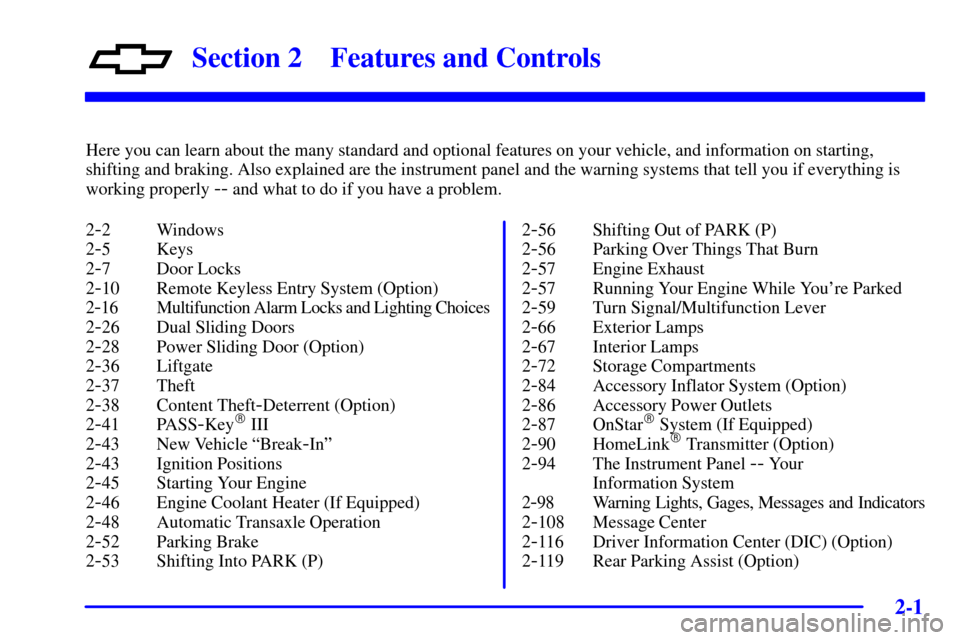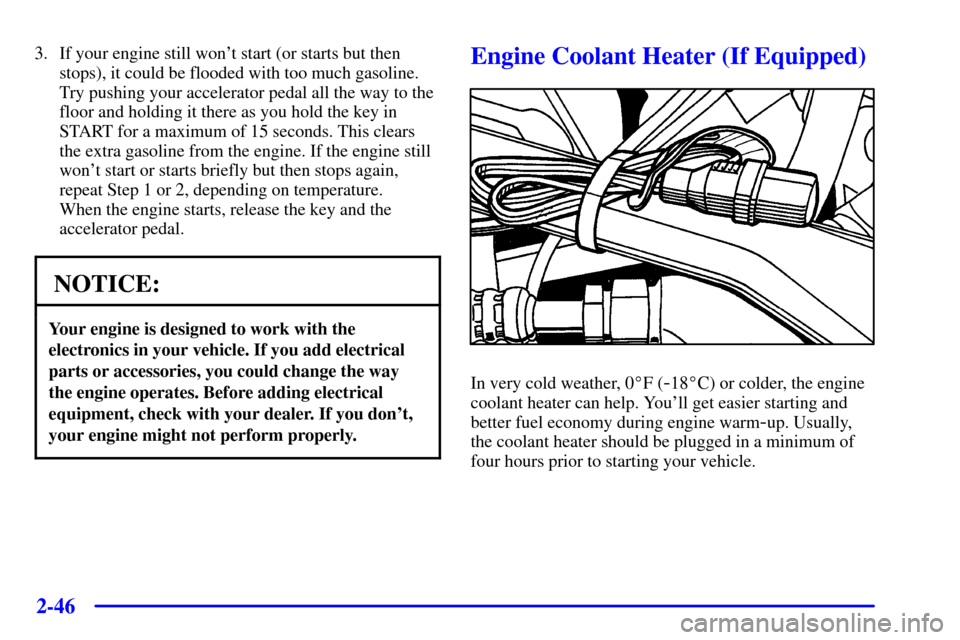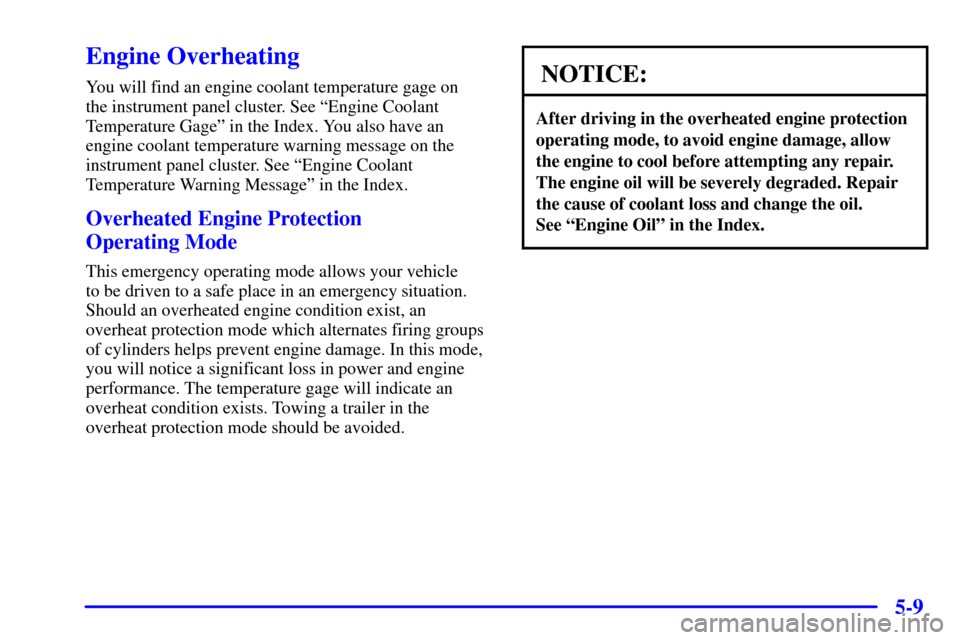Page 11 of 460

ix
For example,
these symbols
are used on an
original battery:
CAUTION
POSSIBLE
INJURY
PROTECT
EYES BY
SHIELDING
CAUSTIC
BATTERY
ACID COULD
CAUSE
BURNS
AVOID
SPARKS OR
FLAMES
SPARK OR
FLAME
COULD
EXPLODE
BATTERY
These symbols
are important for
you and your
passengers
whenever your
vehicle is driven:
CHILD
RESTRAINT
TOP STRAP
ANCHOR
DOOR LOCK
UNLOCK
FASTEN
SEAT
BELTS
POWER
WINDOW
AIR BAG
These symbols
have to do with
your lamps:
MASTER
LIGHTING
SWITCH
TURN
SIGNALS
PARKING
LAMPS
HAZARD
WARNING
FLASHER
DAYTIME
RUNNING
LAMPS
FOG LAMPS
These symbols
are on some of
your controls:
WINDSHIELD
WIPER
WINDSHIELD
WASHER
WINDSHIELD
DEFROSTER
REAR
WINDOW
DEFOGGER
VENTILATING
FAN
These symbols
are used on
warning and
indicator lights:
ENGINE
COOLANT
TEMP
BATTERY
CHARGING
SYSTEM
BRAKE
COOLANT
ENGINE OIL
PRESSURE
ANTI-LOCK
BRAKES
Here are some
other symbols
you may see:
FUSE
LIGHTER
HORN
FUEL
Vehicle Symbols
These are some of the symbols you may find on your vehicle. Also see ªWarning Lights and Gagesº in the Index.
Page 114 of 460

2-
2-1
Section 2 Features and Controls
Here you can learn about the many standard and optional features on your vehicle, and information on starting,
shifting and braking. Also explained are the instrument panel and the warning systems that tell you if everything is
working properly
-- and what to do if you have a problem.
2
-2 Windows
2
-5 Keys
2
-7 Door Locks
2
-10 Remote Keyless Entry System (Option)
2
-16 Multifunction Alarm Locks and Lighting Choices
2
-26 Dual Sliding Doors
2
-28 Power Sliding Door (Option)
2
-36 Liftgate
2
-37 Theft
2
-38 Content Theft-Deterrent (Option)
2
-41 PASS-Key� III
2
-43 New Vehicle ªBreak-Inº
2
-43 Ignition Positions
2
-45 Starting Your Engine
2
-46 Engine Coolant Heater (If Equipped)
2
-48 Automatic Transaxle Operation
2
-52 Parking Brake
2
-53 Shifting Into PARK (P)2
-56 Shifting Out of PARK (P)
2
-56 Parking Over Things That Burn
2
-57 Engine Exhaust
2
-57 Running Your Engine While You're Parked
2
-59 Turn Signal/Multifunction Lever
2
-66 Exterior Lamps
2
-67 Interior Lamps
2
-72 Storage Compartments
2
-84 Accessory Inflator System (Option)
2
-86 Accessory Power Outlets
2
-87 OnStar� System (If Equipped)
2
-90 HomeLink� Transmitter (Option)
2
-94 The Instrument Panel -- Your
Information System
2
-98 Warning Lights, Gages, Messages and Indicators
2
-108 Message Center
2
-116 Driver Information Center (DIC) (Option)
2
-119 Rear Parking Assist (Option)
Page 159 of 460

2-46
3. If your engine still won't start (or starts but then
stops), it could be flooded with too much gasoline.
Try pushing your accelerator pedal all the way to the
floor and holding it there as you hold the key in
START for a maximum of 15 seconds. This clears
the extra gasoline from the engine. If the engine still
won't start or starts briefly but then stops again,
repeat Step 1 or 2, depending on temperature.
When the engine starts, release the key and the
accelerator pedal.
NOTICE:
Your engine is designed to work with the
electronics in your vehicle. If you add electrical
parts or accessories, you could change the way
the engine operates. Before adding electrical
equipment, check with your dealer. If you don't,
your engine might not perform properly.
Engine Coolant Heater (If Equipped)
In very cold weather, 0�F (-18�C) or colder, the engine
coolant heater can help. You'll get easier starting and
better fuel economy during engine warm
-up. Usually,
the coolant heater should be plugged in a minimum of
four hours prior to starting your vehicle.
Page 160 of 460

2-47
To Use the Engine Coolant Heater
1. Turn off the engine.
2. Open the hood and unwrap the electrical cord. The
electrical cord is located on the driver's side of the
engine compartment.
3. Plug it into a normal, grounded 110
-volt AC outlet.
CAUTION:
Plugging the cord into an ungrounded outlet
could cause an electrical shock. Also, the wrong
kind of extension cord could overheat and cause
a fire. You could be seriously injured. Plug the
cord into a properly grounded three
-prong
11 0
-volt AC outlet. If the cord won't reach, use a
heavy
-duty three-prong extension cord rated for
at least 15 amps.
4. Before starting the engine, be sure to unplug
and store the cord as it was before to keep it away
from moving engine parts. If you don't, it could
be damaged.
How long should you keep the coolant heater plugged
in? The answer depends on the outside temperature, the
kind of oil you have, and some other things. Instead of
trying to list everything here, we ask that you contact
your dealer in the area where you'll be parking your
vehicle. The dealer can give you the best advice for that
particular area.
Page 216 of 460

2-103
�If there's a brake system problem that is specifically
related to traction control, the traction control system
will turn off and the warning light will come on. If
your brakes begin to overheat, the traction control
system will turn off and the warning light will come
on until your brakes cool down.
�If the traction control system is affected by an
engine
-related problem, the system will turn off and
the warning light will come on.
If the traction control system warning light comes on
and stays on for an extended period of time when the
system is turned on, your vehicle needs service.
Engine Coolant Temperature Gage
United States Canada
This gage shows the engine coolant temperature.
If the gage pointer moves into the red area, your engine
is too hot!
It means that your engine coolant has overheated. If you
have been operating your vehicle under normal driving
conditions, you should pull of the road, stop your
vehicle and turn off the engine as soon as possible.
See ªEngine Overheatingº in the Index.
Page 223 of 460
2-110 Traction Active Message (Option)
United States Canada
If your vehicle has the traction control system, the
TRACTION ACTIVE message will appear when the
traction control system is limiting wheel spin. You may
feel or hear the system working, but this is normal.
Slippery road conditions may exist if this message
appears, so adjust your driving accordingly. The
message will stay on for a few seconds after the traction
control system stops limiting wheel spin.
Engine Coolant Temperature
Warning Message
United States Canada
This message will come on when your engine
gets too hot.
If this message comes on, it means that your engine
coolant has overheated. If you have been operating your
vehicle under normal driving conditions, you should
pull off the road, stop your vehicle and turn off the
engine as soon as possible.
See ªEngine Overheatingº in the Index.
Page 237 of 460

3-4 Heating
Turn the temperature knob clockwise (toward the red
area) to warm the air.
In the LOWER setting, outside air will be brought in
and sent through the floor outlets. The heater works
best if you keep your windows closed while using it.
The BI
-LEVEL setting is designed for use on sunny
days when the air is only moderately warm or cool.
On days like these, the sun may adequately warm your
upper body, but your lower body may not be warm
enough. For the best results, turn the temperature knob
to the middle position, and then adjust it for comfort.
Your vehicle has a computer controlled transaxle
designed to warm up the engine faster when the outside
temperature is 35�F (2�C) or colder. You may notice
that the transaxle will shift at a higher vehicle speed
until the engine is warmed up. This is a normal
condition designed to provide heat to the passenger
compartment and defrost the windows more quickly.
If you have the optional engine coolant heater and use it
during cold weather, 0�F (
-18�C) or lower, your
heating system will provide heat more quickly because
the engine coolant is already warmed. See ªEngine
Coolant Heaterº in the Index.
Defogging and Defrosting
To rapidly defrost the windshield, turn the temperature
knob all the way clockwise (to the red area) and turn
the mode knob to DEFROST. Adjust the fan to the
highest speed.
To keep the windshield clear and bring in heated air
through the heater ducts, turn the mode knob to DEFOG.
When the temperature outside is above freezing, the air
conditioner compressor will run in these settings to help
remove moisture from the air.
Your vehicle is equipped with side window defogger
vents located on the top of the instrument panel. For
additional side window defogging, turn the mode knob
to the BI
-LEVEL setting and adjust the fan to the
highest speed. Aim the side vents on the instrument
panel toward the side windows. For increased airflow
to the side vents, close the center vents.
Operating the HVAC system in the RECIRCULATION
mode may cause fogging of the vehicle's windows when
the weather is cold and damp. To clear the fog, switch
the HVAC system to either the DEFOG or DEFROST
mode and increase the fan speed. To avoid re
-fogging
of the windows, operate the HVAC system in the
OUTSIDE AIR mode.
For additional information, refer to ªRECIRCULATIONº
earlier in this section.
Page 326 of 460

5-9
Engine Overheating
You will find an engine coolant temperature gage on
the instrument panel cluster. See ªEngine Coolant
Temperature Gageº in the Index. You also have an
engine coolant temperature warning message on the
instrument panel cluster. See ªEngine Coolant
Temperature Warning Messageº in the Index.
Overheated Engine Protection
Operating Mode
This emergency operating mode allows your vehicle
to be driven to a safe place in an emergency situation.
Should an overheated engine condition exist, an
overheat protection mode which alternates firing groups
of cylinders helps prevent engine damage. In this mode,
you will notice a significant loss in power and engine
performance. The temperature gage will indicate an
overheat condition exists. Towing a trailer in the
overheat protection mode should be avoided.
NOTICE:
After driving in the overheated engine protection
operating mode, to avoid engine damage, allow
the engine to cool before attempting any repair.
The engine oil will be severely degraded. Repair
the cause of coolant loss and change the oil.
See ªEngine Oilº in the Index.